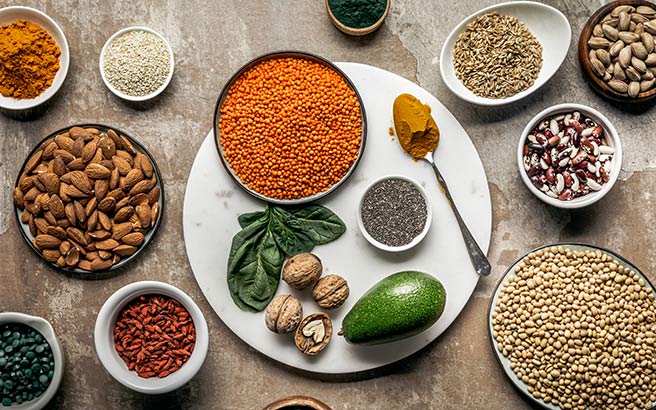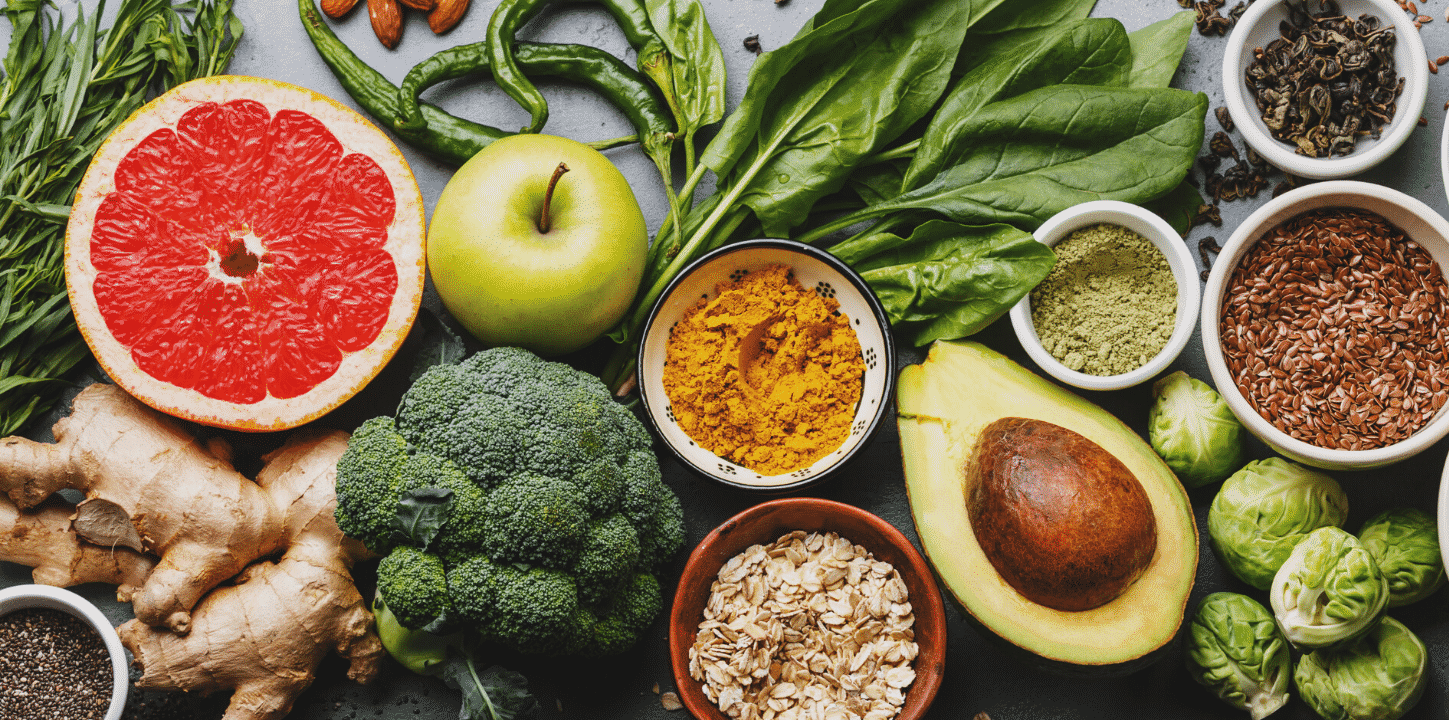Pleasing Your Gut
"It's certainly not as black and white as a single number [of plant foods to include in a weekly diet for optimum gut health], but in my clinic 30 has shown to be an effective target to increase gut microbe diversity."Dr. Megan Rossi nutrition expert, author"Basically different types of fibre and polyphenols feed different microbes and that is the reason why we need variety.""Things like spinach and berries are much higher in their nutritional value when they are frozen because vitamin C degrades after a vegetable or fruit has been harvested."Eve Kalinik, nutritional therapist, author of Happy Gut, Happy Mind"What that means is any food that comes from a plant.""Yes, fruit and vegetables, but also beans and pulses, nuts and seeds, grains such as oats, quinoa and brown rice and whole-grain cereals."Dr. Hazel Wallace, founder, The Food Medic educational platform
 |
| Photo World Cancer Research Fund |
The World Health Organization advocates that to achieve optimum health, a minimum of 400g of fruit and vegetables is required for a healthy daily diet to lower risk of serious health problems. The theory is that poor outcomes in heart disease, stroke and some types of cancer are to be avoided when the body is adequately armed with a healthy diet. Now there's a challenge to the recommended five servings of vegetables daily.
A new standard agreed upon by nutritionists and medical scientists calling for an average of 30 different plant foods a week seeks to surpass the five servings a day generalization for optimum health, by emphasizing that the plant-derived foods ideally be different, chosen from a wide range of food derived from plants to achieve that optimum gut health.
According to the results of studies, people who consume at minimum 30 different plant-based foods weekly boast more diverse gut microbes than do those who eat fewer than ten. And the more varied the diet, the stronger the microbiome will turn out. There are close links with the quality of gut microbiome and inflammation, immune system function, mental health and metabolic health.
All of the various chosen fruits and vegetables that fall into the 30-weekly goal, merit one point, while herbs and spices also count, but each as a quarter-point. If chives, basil, parsley and oregano appear in a dish as herbal flavourings, all four would constitute a full point in the 30-point goal. It is not required that herbs be fresh; the herbs can be dried. And as well, plant-based food can come from a can, a jar or the freezer.
 |
| The Gut Stuff |
- Fruit and vegetables are obviously plant foods: each variety can count as one – so a cos lettuce is different to watercress, rocket and iceberg. As with 5 A DAY, sweet potatoes are good, and – unlike 5 A DAY – the good old-fashioned King Edward potato does count.
- Legumes: so we’re talking beans, such as black, cannellini or kidney, chickpeas, and lentils.
- Grains: oats, buckwheat, millet, wheat, brown rice, wholemeal pasta and quinoa. White pasta and rice aren’t included, because the industrial processes used to remove the whole grains strip them of many of their nutritional benefits.
- Nuts and seeds: almonds, hazelnuts, sunflower seeds, pumpkin seeds, cashews – so many to choose from.
- Herbs and spices: Obviously they’re plant-based but, because the quantities we eat tend to be fairly small, each is only counted as one-quarter.
Labels: Diet, Gut Microbiome, Healthy Gut, Studies

0 Comments:
Post a Comment
<< Home